Oregon. The very name conjures images of towering forests, dramatic coastlines, and, of course, waterfalls. Hundreds of them. From the iconic torrents of the Columbia River Gorge to the hidden gems tucked away in ancient forests, Oregon offers a waterfall chasing adventure unlike any other. There’s a certain magic in the air, especially during spring (roughly March through June), when the winter melt transforms these cascades into thundering spectacles, framed by impossibly green moss and vibrant wildflowers. Lace up your boots, grab your rain jacket (just in case!), and let’s embark on a journey to explore some of the most breathtaking waterfall hikes the Beaver State has to offer. It’s an experience that awakens the senses – the roar of the water, the cool mist on your face, the earthy scent of the damp forest floor.
The Crown Jewel: Silver Falls State Park & The Trail of Ten Falls
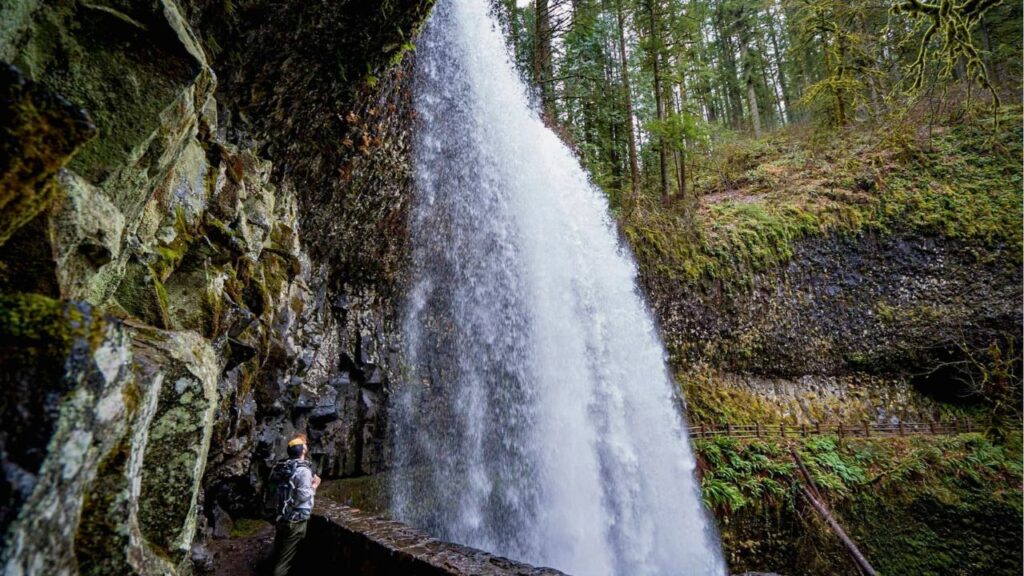
Often hailed as the “Crown Jewel” of Oregon’s State Parks, Silver Falls State Park near Salem lives up to its name, particularly for waterfall lovers. The main attraction? The legendary Trail of Ten Falls. This isn’t just a hike; it’s an immersion into a world where water sculpts the landscape.
The full loop, combining the Canyon Trail and Rim Trail, officially clocks in at about 7.4 miles, though don’t be surprised if your own tracking nudges closer to 10 or 11 miles with detours and viewpoints – ours certainly did! It took us a solid, rewarding 4 hours, filled with constant awe. Despite an elevation gain of around 1,151 feet, the trail feels surprisingly manageable for moderately active hikers. The inclines are mostly gradual, punctuated by sections of stairs that get you up close and personal with the falls. For those not quite up for the full circuit, convenient cut-offs like the Maple Ridge Trail and Winter Trail offer shorter loops back to the main day-use area near South Falls.
Walking this trail feels like stepping into a fairy tale. You’ll follow the path as it winds along Silver Creek, dipping down into canyons and leading you behind waterfalls – four of them, in fact! Feeling the immense power and cool spray of a cascade like South Falls or Lower South Falls from behind is an unforgettable, almost primal experience. It’s hard to pick a favorite, but the sheer scale of the cave behind North Falls (136 feet) was particularly memorable; it’s so vast you barely feel the mist, unlike the more intimate encounters behind South and Lower South Falls.
Here’s a glimpse of the stars of the show:
| Waterfall Name | Height (approx.) | Notable Feature |
| South Falls | 177 feet | Walk behind, iconic, near visitor center |
| Lower South Falls | 93 feet | Walk behind, wide curtain |
| Lower North Falls | 30 feet | Unique cascade over a downed tree |
| Double Falls | 178 feet | Tallest on the trail, two tiers |
| Drake Falls | 27 feet | Smaller, charming cascade |
| Middle North Falls | 106 feet | Walk behind, curtain over the path |
| Twin Falls | 31 feet | Can split into two falls in high flow |
| North Falls | 136 feet | Walk behind, massive cave-like alcove |
| Upper North Falls | 65 feet | Short detour, viewed from a distance |
| Winter Falls | 134 feet | Short detour, best flow in winter/spring |
Tips for Hiking the Trail of Ten Falls:
- Go Early or Mid-Week: South Falls area gets very crowded, especially on sunny weekends. Aim for a weekday or an early start. Rainy days often mean fewer people and more dramatic falls!
- Wear Sturdy Shoes: The trail can be muddy, slippery, and uneven, especially near the falls and on the stairs. Waterproof hiking boots are ideal.
- Pack Layers: Oregon weather can change quickly. Bring layers, including a waterproof jacket for the mist (and potential rain).
- Bring Water & Snacks: While not overly strenuous, it’s a long hike. Stay hydrated and fueled.
- Check Conditions: Especially outside of summer, check the park’s website for trail status updates.
Conquering the Columbia River Gorge Waterfall Corridor
Just a short drive east of Portland lies the majestic Columbia River Gorge, a dramatic canyon carved by the mighty Columbia River. This National Scenic Area boasts the highest concentration of waterfalls in North America – over 90 documented falls! The historic highway winds through lush forests, offering jaw-dropping views and access to numerous trailheads. Be prepared, though – this beauty draws crowds, and parking can be a challenge, especially at popular spots.
Here are some must-visit waterfall hikes in the Gorge:
Multnomah Falls:
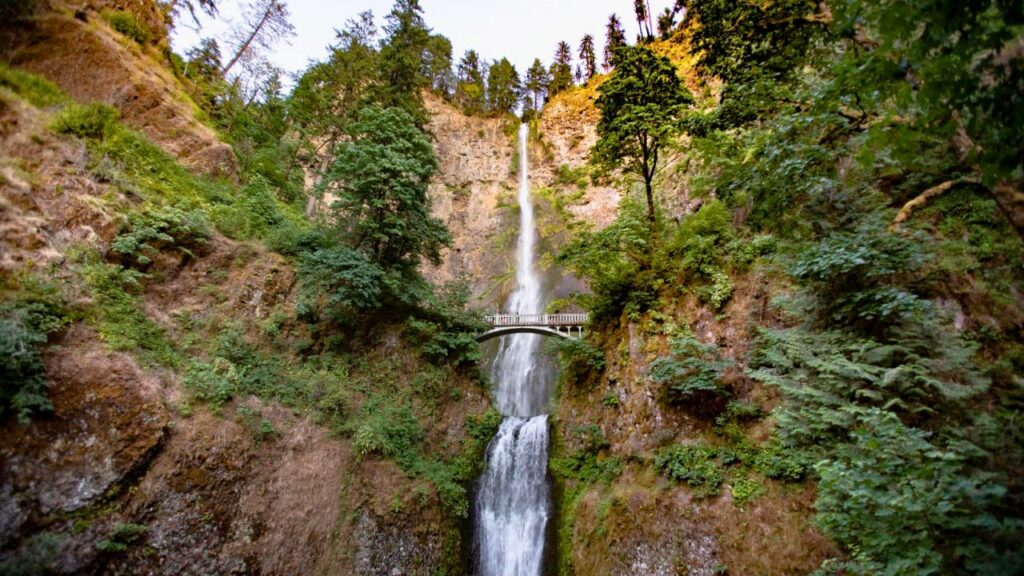
The Icon. Standing at a staggering 620 feet across two tiers, Multnomah is Oregon’s tallest and most famous waterfall. It’s incredibly accessible, visible right off the highway, with the historic Multnomah Falls Lodge at its base. You can walk up to the Benson Bridge for a classic photo op.
Trail: Paved path to Benson Bridge (easy); optional steeper 2.4-mile round trip hike to the top viewing platform (moderate).
Heads Up: Extremely popular; timed use permits are often required during peak season (check recreation.gov). Parking is limited.
Latourell Falls:
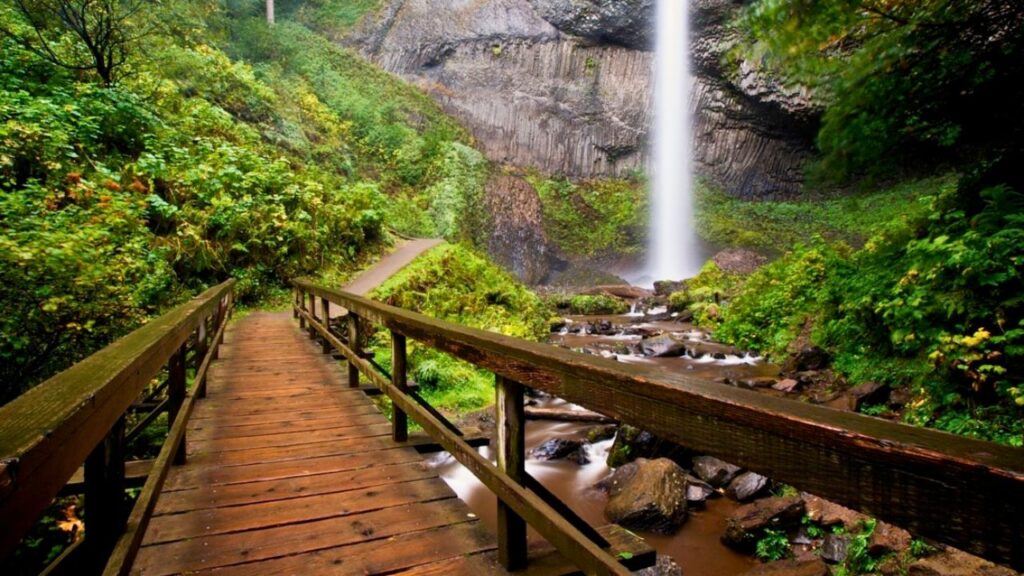
Basalt Beauty. My personal favorite for its unique geology. The 224-foot lower falls plunges over a massive wall of columnar basalt adorned with vibrant yellow-green lichen. It feels ancient and powerful.
Trail: Very short walk to the base viewpoint (easy); optional 3-mile loop trail climbs to Upper Latourell Falls (moderate).
Wahkeena Falls:
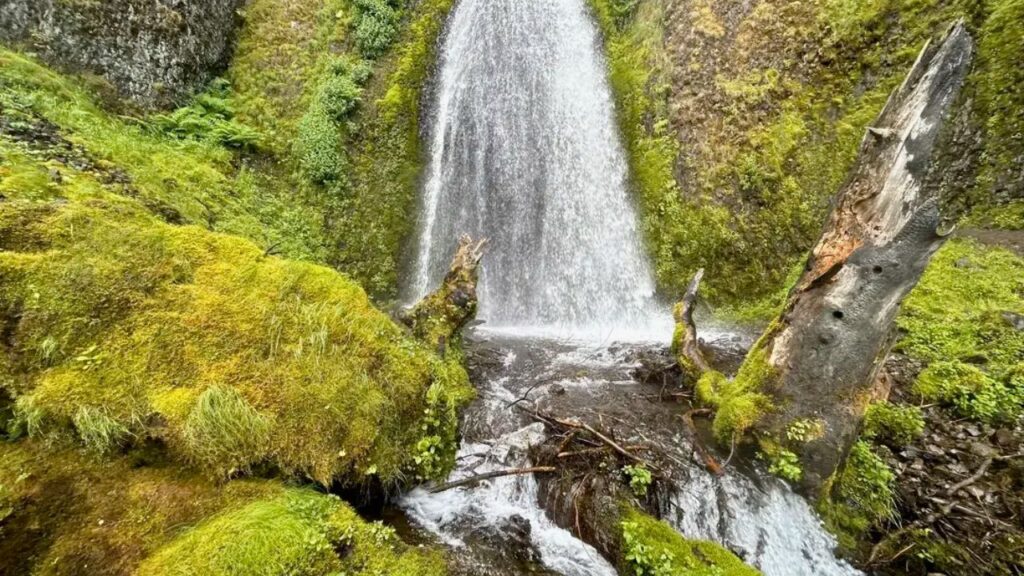
Cascading Charm. This lovely 242-foot tiered waterfall means “most beautiful” in Yakama. The trail starts with a picturesque stone bridge right in front of the main cascade.
Trail: 0.4 miles round trip to the bridge (easy); connects to a longer loop (approx. 5 miles) past Fairy Falls and Lemmons Viewpoint, eventually linking towards Multnomah Falls (moderate-difficult). Beware of icy switchbacks in winter.
Horsetail & Ponytail Falls:
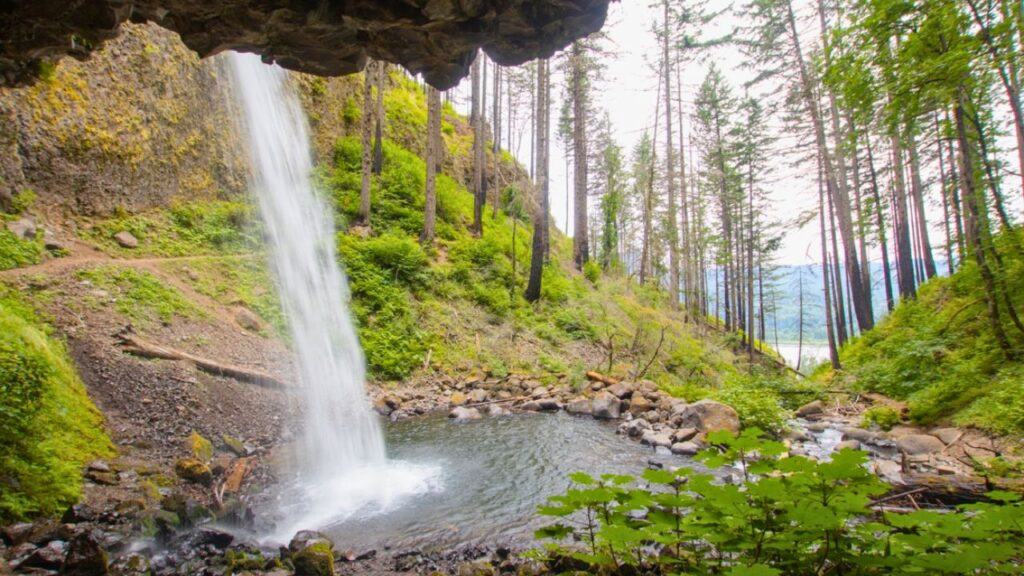
A Double Delight. Horsetail Falls is visible roadside. A short, steep hike takes you up behind the aptly named Ponytail Falls, offering another cool walk-behind experience through a cave-like passage.
Trail: 0.9 miles round trip (easy-moderate).
Note: This area was impacted by the Eagle Creek Fire; be aware of potential hazards like falling trees or landslides, especially during/after rain.
Wahclella Falls:
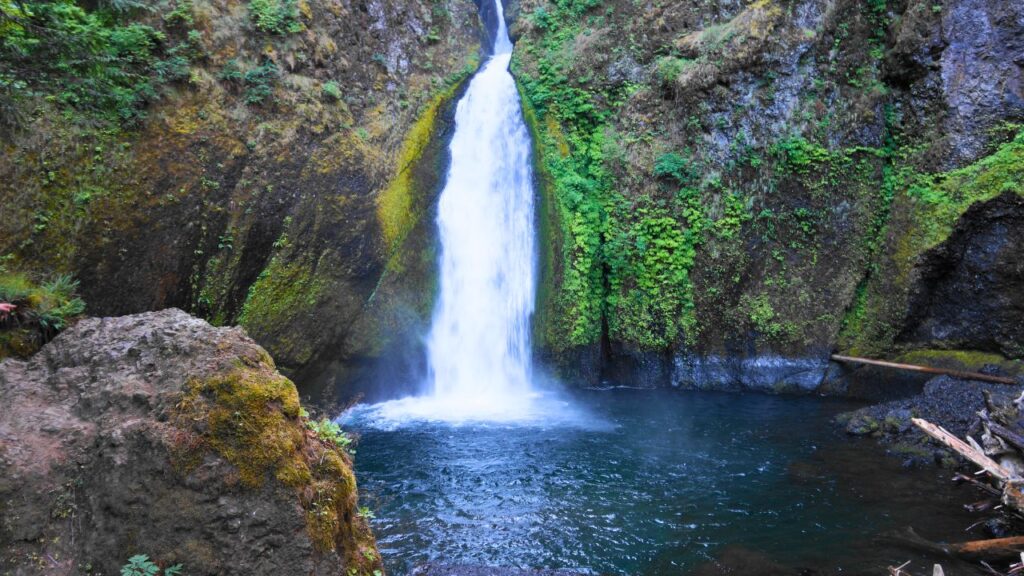
Slot Canyon Gem. This is a fantastic payoff for a relatively easy hike. The trail leads through a lush canyon, sometimes requiring navigating over rocks or small streams, ending at a stunning two-tiered, 350-foot waterfall plunging into a large splash pool within a dramatic amphitheater.
Trail: 2.4 miles round trip (easy-moderate).
Note: Parking is very limited; arrive early. Prone to landslides, so check conditions.
Tunnel Falls:
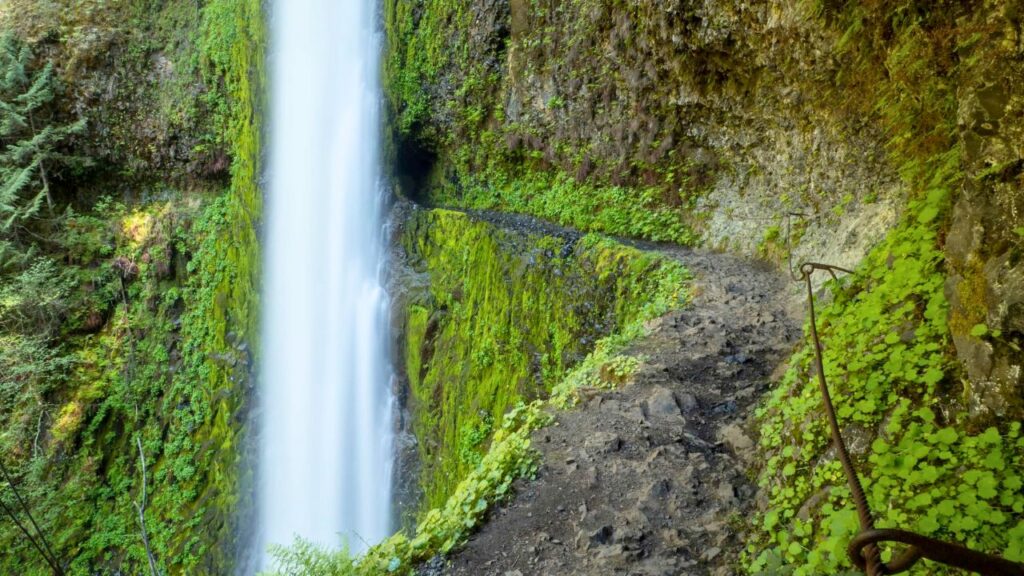
The Ultimate Gorge Adventure (Longer Hike). Accessed via the Eagle Creek Trail (check current status as it’s prone to closures), this hike is legendary. After miles of stunning canyon scenery with multiple smaller falls, the trail dramatically blasts through the rock behind the 172-foot Tunnel Falls. It’s an exhilarating, otherworldly experience.
Trail: 12 miles round trip (difficult due to length and exposure).
Gorge Hiking Tips:
- Check Permits: Especially for Multnomah Falls during peak season.
- Arrive Early: Parking lots fill up extremely fast, particularly on weekends.
- Be Prepared for Crowds: Especially at Multnomah, Latourell, and Wahkeena.
- Watch Your Footing: Trails can be rocky, wet, and have steep drop-offs.
- Heed Closures: Wildfires and landslides can impact trails. Always check official Forest Service or Oregon State Parks websites before heading out.
Beyond the Gorge: Chasing Waterfalls Across Oregon
While Silver Falls and the Gorge steal much of the spotlight, spectacular waterfalls await discovery all across Oregon. Venturing further afield often rewards you with fewer crowds and equally stunning scenery.
Umpqua National Forest (Southern Oregon):
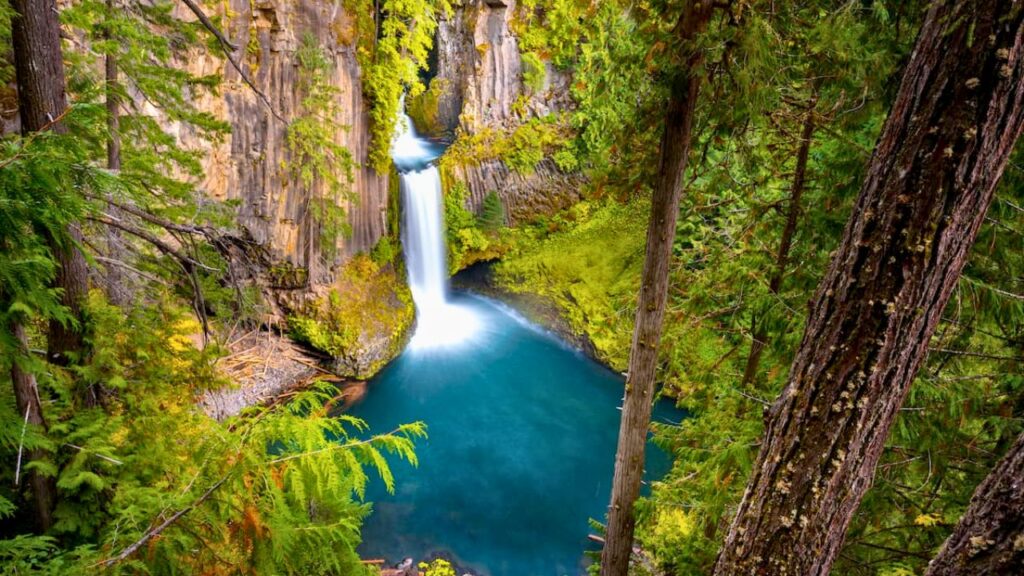
- Toketee Falls: A classic postcard view. This two-tiered fall (113 feet total) plunges over columnar basalt into a deep turquoise pool. The trail is short (0.8 miles round trip) but involves many stairs down to a viewing platform.
- Watson Falls: One of Oregon’s tallest at 293 feet! A short, steep loop trail (0.8 miles) takes you through lush forest to the base, where you can feel the spray.
Willamette National Forest (Central Cascades):
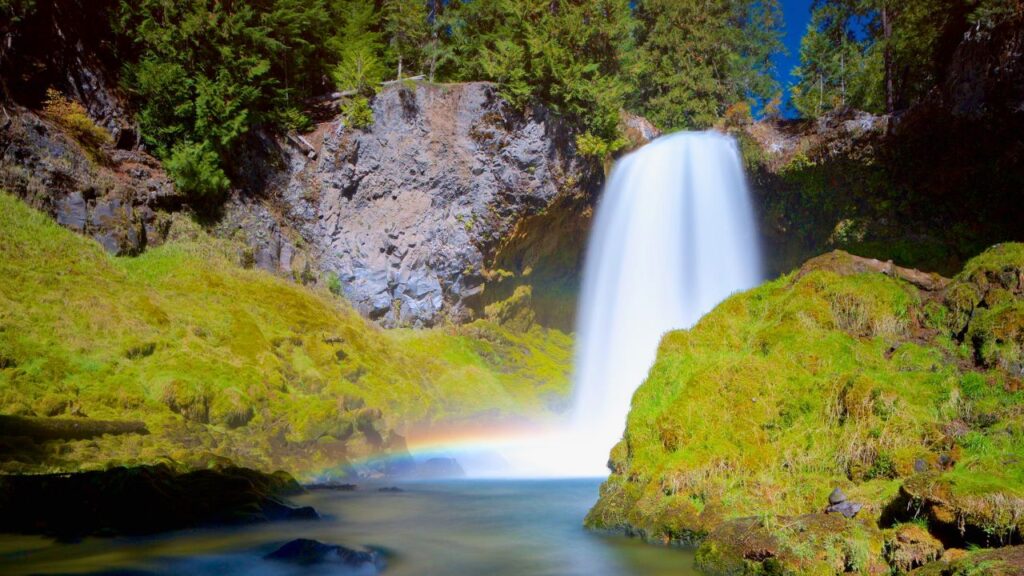
- Salt Creek Falls: Another giant at 286 feet, this single-plunge waterfall is easily viewed from a paved overlook near the parking lot. A steeper trail leads closer to the base. Often paired with the nearby Diamond Creek Falls Trail for a longer hike. Standing at the overlook truly makes you feel tiny against nature’s power – almost Icelandic!
- Diamond Creek Falls: A beautiful, multi-tiered cascade often visited in conjunction with Salt Creek Falls on a lovely loop trail through the forest.
- Proxy Falls: A unique beauty. This stunning 226-foot waterfall fans out in delicate streams over a moss-covered lava flow. The easy 1.6-mile loop trail winds through lava fields and forest. Note: The road access (Hwy 242) is typically closed from fall through late spring/early summer due to snow.
- Sahalie & Koosah Falls: Located along the McKenzie River National Recreation Trail, these two powerhouses are easily accessible via short walks or a connecting loop trail (approx. 2.6 miles). Sahalie thunders directly into view, while Koosah offers a slightly more secluded feel just downstream. The vibrant turquoise water is mesmerizing.
- Tamolitch Falls (Blue Pool): Famous for its astonishingly blue water, this isn’t always a flowing waterfall. Water from the McKenzie River flows underground and resurfaces here. The hike along the river (approx. 3.7 miles round trip) is beautiful. Swimming is discouraged due to dangerously cold water temperatures year-round.
Mount Hood National Forest:
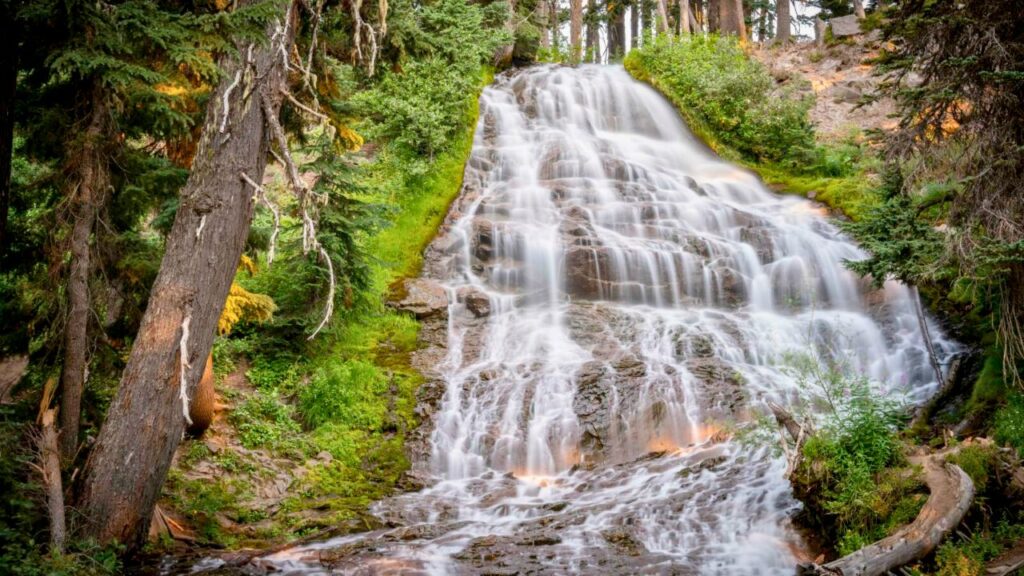
- Ramona Falls: A truly elegant waterfall. Water cascades gracefully down a 120-foot mossy, stair-stepped cliff face. The 7.1-mile loop hike involves a potentially tricky seasonal bridge crossing over the Sandy River (check conditions!).
Santiam State Forest:
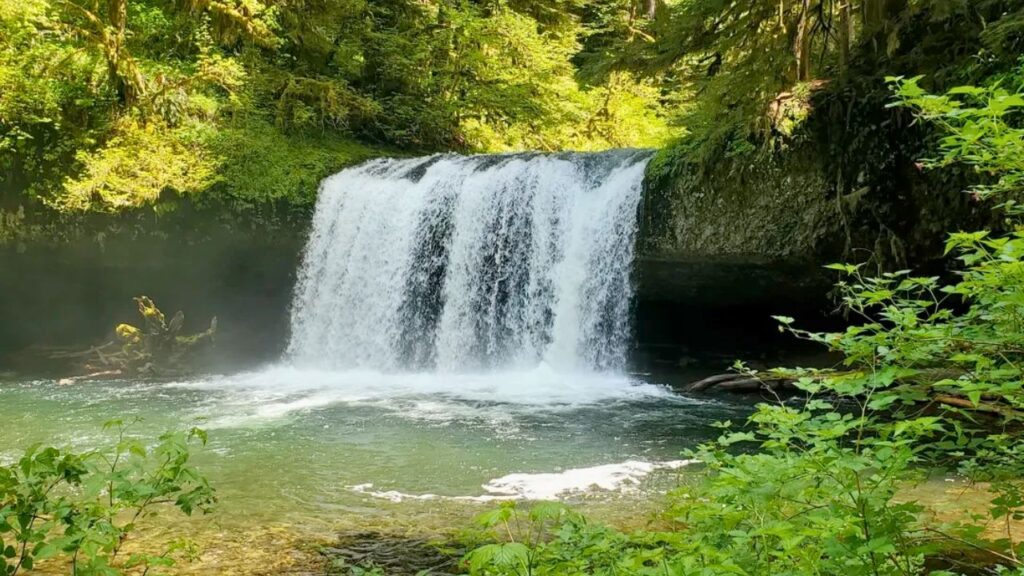
- Abiqua Falls: An adventurous hike rewards you with a stunning waterfall plunging 92 feet into a massive basalt amphitheater. The short trail (approx. 0.7 miles round trip) is steep and rugged, sometimes requiring ropes (often in place) to navigate tricky sections. High-clearance vehicle recommended for the access road.
Tips for Your Oregon Waterfall Adventure
Ready to hit the trails? Here are a few final tips to ensure a safe and memorable experience:
- Timing is Key: Spring (April-June) generally offers the most powerful water flow. Summer means easier trail access (less mud/snow) but also more crowds. Fall brings beautiful colors. Winter offers solitude but requires checking for snow, ice, and road closures.
- Gear Up:
- Footwear: Waterproof hiking boots with good traction are essential. Trails are often wet, muddy, and rocky.
- Layers: Oregon’s weather is fickle. Dress in non-cotton layers (synthetics or wool) and always pack rain gear.
- Navigation: While many popular trails are well-marked, always carry a map (physical or downloaded offline map) and know how to use it, especially on longer or less-traveled trails. A compass or GPS device is recommended for backcountry adventures.
- Check Conditions Before You Go: Wildfires, landslides, snow levels, and seasonal bridge removals can all impact trail access. Check the relevant Forest Service or State Park website, recent trip reports (like OregonHikers.org), or call the ranger district.
- Safety First:
- Stay on marked trails. Cutting switchbacks causes erosion, and wandering off-trail near cliffs can be extremely dangerous.
- Be aware of slippery rocks and logs, especially near mist zones.
- Never climb on or around waterfalls. Rocks are slippery, and currents can be deceptively strong.
- In burn areas (like parts of the Gorge), be extra vigilant about falling trees or limbs and potential landslides, especially during wind or rain.
- Let someone know your hiking plans, including your route and expected return time.
- Leave No Trace: Pack out everything you pack in (including food scraps and toilet paper). Stay on durable surfaces. Respect wildlife by observing from a distance. Minimize campfire impacts (check current fire restrictions). Leave rocks, plants, and other natural objects as you find them.
- Embrace the Mud & Mist: Especially in spring, expect muddy trails. Don’t let it deter you – it’s part of the authentic PNW experience! The mist from powerful falls is invigorating.
Oregon’s waterfalls are more than just geological formations; they are places of power, beauty, and rejuvenation. Whether you seek the thunderous roar of a giant cascade or the delicate trickle of a hidden gem, the trails await. So, pack your sense of adventure, respect the wildness of these places, and prepare to be amazed by the cascading wonders of Oregon. Happy hiking!
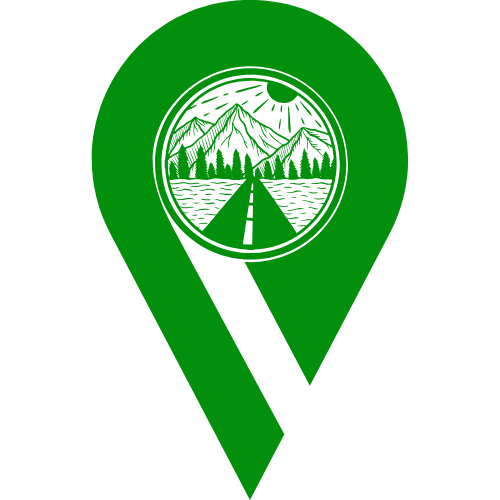
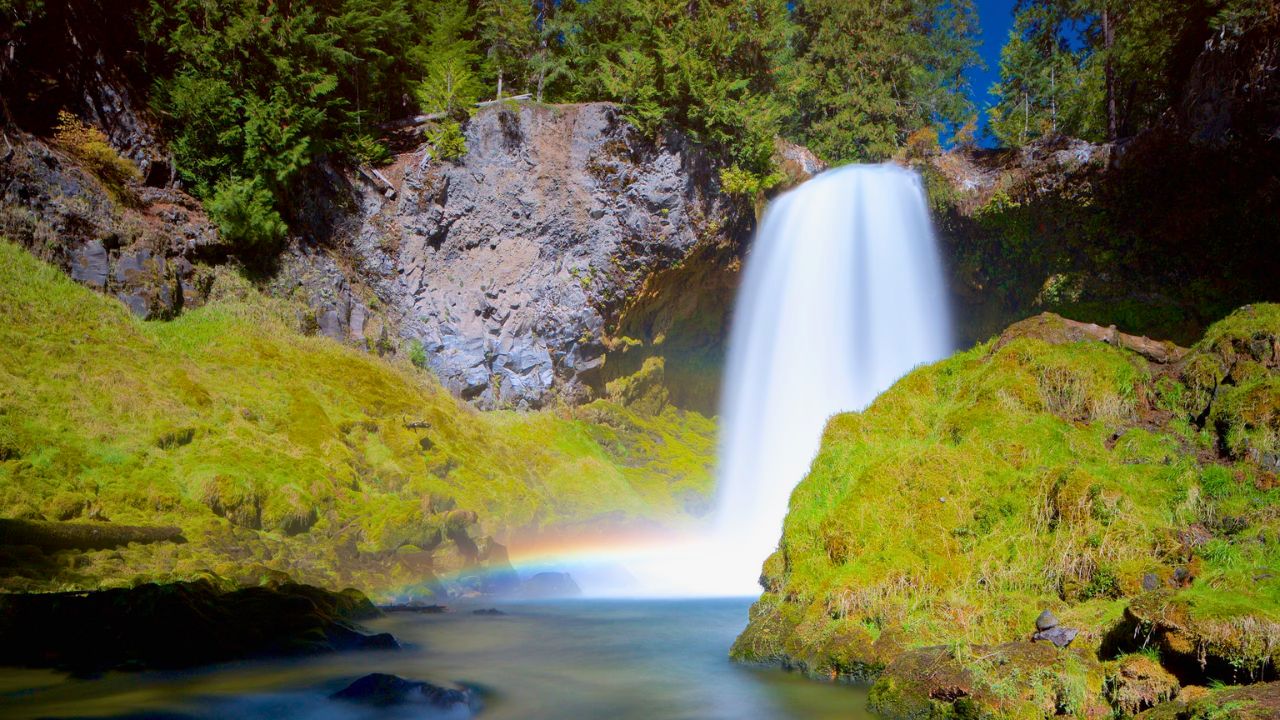
Leave a Reply